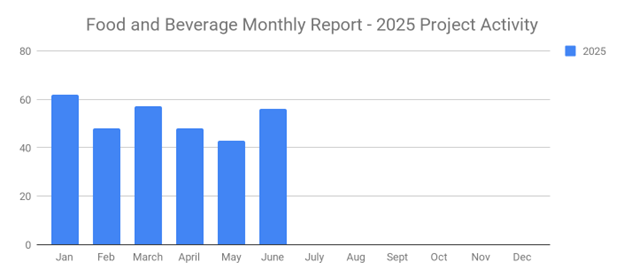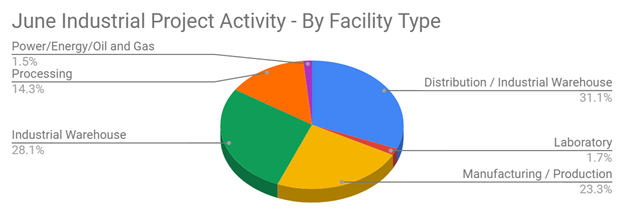
Your B2B company's ability to generate sales is dependent upon sales leads. Sales leads are prospective buyers. Some sales leads are cold, meaning they haven't contacted or communicated with your B2B company in the past. Other leads are warm, meaning they have had some form of interaction with your B2B company. Whether cold, warm or hot, all leads are prospective buyers to whom you can pitch your B2B company's products or services.
When executing a lead generation campaign, however, you'll need to track its performance. Without performance tracking, you won't know whether you are succeeding or failing. Fortunately, there are several ways to track the performance of a B2B lead generation campaign.
#1) Total Quantity
You can look at the total quantity of leads to measure the performance of your lead generation campaign. An effective lead generation campaign will result in an ever-increasing number of leads. Your B2B company's list of prospective customers will grow. It contracts or shrinks, on the other hand, you should reevaluate your lead generation campaign. Lead generation campaigns are only successful if the total quantity of leads increases.
#2) Freshness
How fresh are your leads? Fresh leads are more valuable than their stale counterparts. Prospective buyers can lose interest in products or services over time. Alternatively, prospective buyers may go with a competitor's product or service. This is why it's important to target fresh leads. According to HubSpot, in fact, leads contacted within the first five minutes of completing a lead form are up to 100 times more likely to make a purchase than leads contacted within 100 minutes or longer.
#3) Average Conversion Rate
Another way to track the performance of your lead generation campaign is to analyze its average conversion rate. You shouldn't look strictly at the total number of leads you've generated. If all or most of them are low quality, they won't bring many new sales to your B2B company. Instead, look at both the total number of leads and their average conversion rate.
Average conversion rate is a historical measurement of the percentage of leads whom you successfully converted into buyers. If you generated 1,000 leads last month, 150 of whom made a purchase, the average conversion rate would be 15 percent. By tracking the average conversion rate of your leads, you'll have a better understanding of how well your lead generation campaign is performing.
#4) MQL
Don't forget to consider marketing-qualified leads (MQLs) when tracking the performance of your lead generation campaign. MQLs are typically more valuable than standard, non-MQL leads. MQLs consist of leads who've performed some form of engagement or interaction with your B2B company's marketing team. They are essentially "qualified" by marketing professionals. As a result, MQLs are often easier to sell to.
#5) Job Title
You can evaluate the job titles of your leads to determine whether your lead generation campaign is succeeding or failing. All leads have a job title. After all, that's what distinguishes B2B leads from B2C leads. Consumers may or may not have a job title, but all B2B buyers have a job title. If a B2B lead works in a low-level position, though, he or she may not buy your B2B company's products or services.
Ideally, you should focus on generating leads from decision-makers. Decision-makers hold high-level positions, such as Chief Executive Officer (CEO), so they can often make decisions on which products or services to buy.
#6) Cost Per Lead
Most B2B companies incur costs when generating leads. Maybe you use paid advertising, or perhaps you buy leads from a specialized vendor. Regardless, you should monitor how much your B2B company typically spends on leads.
Cost per lead is a measurement of how much money it costs your B2B business to generate a lead. It's calculated by taking the total cost of your lead generation efforts for a given period and dividing it by the number of leads you generated during that same period. If you spend $1,000 to generate 500 leads last month, your cost per lead would be $2. By maintaining a low cost per lead, your B2B company's profits will increase, assuming the leads are high quality.
#7) Completeness
You can track the performance of your lead generation campaign by evaluating the completeness of your leads. What does this mean exactly? Completeness refers to how much information you know about a lead. Some leads may provide a minimal amount of information, such as the prospective buyer's name and number. Other leads, though, are more complete. Along with the prospective buyer's name and number, they may reveal his or her education, past employment, email address, job title and more.
Complete leads are more valuable than incomplete leads because they contain more information. You can review this information to learn more about leads and how your B2B company can better serve them.
What to learn more? Get in Touch
Latest Posts
-

June's New Distribution and Supply Chain Planned Projects Return to March’s 183 Confirmed Figure
-

Food and Beverage Rebounds with 56 New Planned Projects Igniting Growth After Decline
-

June 2025’s New Industrial Construction Projects Grew 7% Month-Over-Month
-

Q2 Industrial Manufacturing Soars 31% for Planned Projects Over $100M; June Planned Industrial Projects Hit 141

